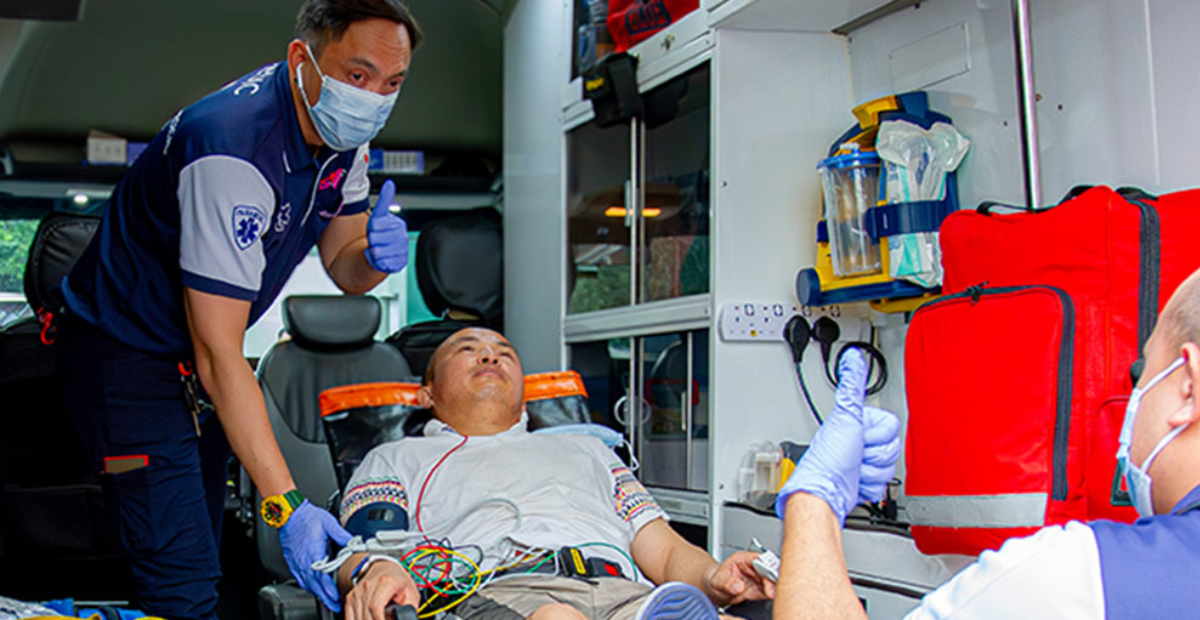The Essential Role and Growing Importance of Non Emergency Ambulance Service
Non emergency ambulance service is becoming an increasingly important part of modern healthcare, offering safe, reliable, and medically supervised transportation for patients who require assistance but are not in life-threatening situations. Whether someone needs to be transferred between hospitals, taken for dialysis appointments, moved from home to a care facility, or supported during routine medical visits, a Non Emergency Ambulance Service ensures comfort, care, and proper handling. This type of transportation fills the gap between emergency response and everyday mobility, giving patients and families the confidence that medical needs will be addressed during the journey.
What Is Non Emergency Ambulance Service?
A non emergency ambulance service provides medical transport for individuals who are stable but still need professional assistance during travel. These patients may have mobility issues, chronic illnesses, disabilities, or conditions that require monitoring but not rapid emergency intervention. Unlike emergency ambulances responding to critical cases, a non emergency ambulance service focuses on planned, scheduled, and medically supported transportation.
These ambulances are staffed by trained personnel such as emergency medical technicians (EMTs) and paramedics. They are equipped with essential medical tools like oxygen, stretchers, monitors, and patient-handling equipment. Each trip is designed to ensure that the patient reaches their destination safely, comfortably, and with medical supervision if required.
Why Non Emergency Ambulance Service Matters
1. Relieves Pressure on Emergency Resources
When non-urgent patients use emergency ambulances, critical resources can be diverted away from life-threatening situations. A dedicated non emergency ambulance service ensures that emergency units remain available for severe medical conditions, helping improve overall response times and hospital readiness.
2. Safer Transport for Vulnerable Patients
Many individuals cannot use regular transport due to medical, mobility, or age-related challenges. A non emergency ambulance service provides:
Trained medical staff
Proper lifting and transfer equipment
Continuous monitoring
Safe and stable transport
This reduces the risk of injury during movement and ensures the patient receives assistance immediately if their condition changes.
3. Comfortable and Dignified Experience
Unlike public transport or regular vehicles, a non emergency ambulance service offers privacy, controlled movement, and individualized care. Elderly patients, bedridden individuals, or recovering patients feel more secure knowing they are being transported by trained professionals.
4. Flexible Scheduling and Convenience
A non emergency ambulance service can be pre-booked, making it ideal for planned medical visits such as follow-ups, scans, physiotherapy sessions, rehabilitation appointments, and long-term treatments.
Who Should Use Non Emergency Ambulance Service?
Many people assume ambulances are only for emergencies, but a non emergency ambulance service benefits a wide range of patients:
Patients with Mobility Challenges
Individuals who cannot walk or stand safely benefit from medical staff trained in lifting and transferring patients onto stretchers or wheelchairs.
Dialysis and Chemotherapy Patients
These patients often require regular hospital visits, and fatigue or weakness can make conventional travel unsafe. A non emergency ambulance service ensures smooth, stress-free travel.
Post-Surgery or Recovery Patients
After surgery, patients may require lying-down transport or supervised travel to avoid complications.
Elderly Individuals
Seniors with chronic diseases, weak balance, or limited mobility often rely on scheduled ambulance transport for routine check-ups.
Patients Needing Interfacility Transfers
Shifting from one hospital to another for tests, consultations, or advanced care is safer with a trained medical transport team.
How Non Emergency Ambulance Service Works
A typical non emergency ambulance service follows a structured and professional process:
1. Booking and Assessment
The family or healthcare provider schedules transport in advance. Basic patient details and medical requirements are recorded so that the right team and equipment are prepared.
2. Arrival and Patient Handling
A team of trained EMTs arrives at the location. They:
Assess the patient’s condition
Use stretchers, wheelchairs, or lifting tools
Ensure the patient is safely secured
3. Monitoring During Transport
Throughout the journey, the non emergency ambulance service team monitors the patient’s comfort and vital signs if needed. They can administer basic medical support, oxygen, or manage mobility equipment.
4. Safe Handover
Upon arrival, the staff assist with transferring the patient into the clinic, home, or hospital ward, ensuring a complete and safe transition.
Benefits of Choosing a Professional Non Emergency Ambulance Service
Trained Medical Staff
Personnel in a non emergency ambulance service typically hold medical certifications. They know how to manage patients with fractures, paralysis, chronic conditions, and respiratory challenges.
Medical-Grade Equipment
Ambulances are fitted with:
Stretchers
Cardiac monitors
Wheelchairs
Oxygen supply
Suction devices
First-aid kits
This equipment ensures the patient’s condition remains stable during the journey.
Customized Transport Solutions
A good non emergency ambulance service can adapt to patient needs such as:
Bariatric transport
Bed-to-bed service
Frequent medical appointments
Long-distance transfers
Special handling for fragile patients
Peace of Mind for Families
Families no longer need to worry about lifting, handling, or transporting medically dependent individuals. The service removes physical strain and ensures the patient is moved with dignity and expertise.
The Growing Demand for Non Emergency Ambulance Service
With ageing populations, chronic medical conditions, and increasing healthcare needs, the demand for non emergency ambulance service is rising globally. More families are recognizing the value of safe, medically supervised transport for their loved ones.
Healthcare institutions, nursing homes, and rehabilitation centres also depend on these services for regular patient transfers. As hospitals become busier, a reliable non emergency ambulance service helps streamline movement and reduce delays.
Why Choose a Reliable Non Emergency Ambulance Service
Selecting the right provider is essential. A dependable non emergency ambulance service should offer:
24/7 availability
Certified medical staff
Modern, clean vehicles
Transparent pricing
Professional patient handling
Fast response times
Trained support for elderly or bedridden patients
A well-established provider ensures that each trip is smooth, safe, and stress-free.
Conclusion
A non emergency ambulance service plays a significant role in modern healthcare, ensuring patients receive safe, medically supervised, and comfortable transportation when emergencies are not involved. It allows patients to reach hospitals, clinics, and care facilities without risk or discomfort. Families gain peace of mind knowing trained medical professionals are handling their loved ones, while hospitals benefit from coordinated and safe patient movement.
As healthcare needs continue to grow, the importance of a reliable non emergency ambulance service will only increase. Its contribution to patient safety, comfort, and accessibility makes it an essential part of a well-functioning healthcare system.







